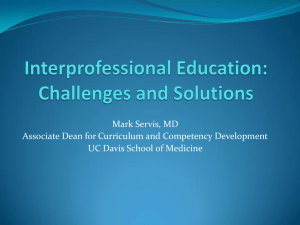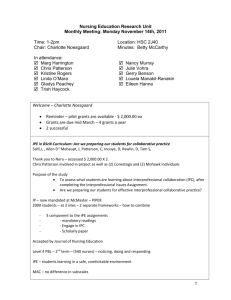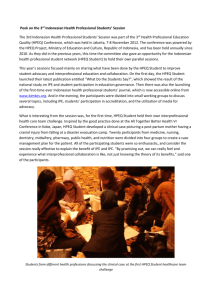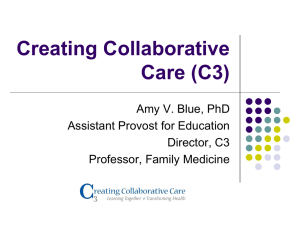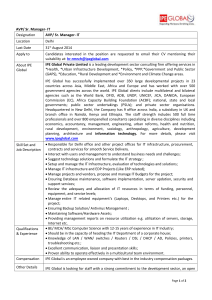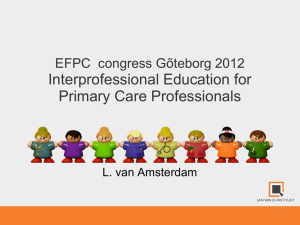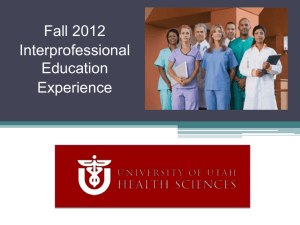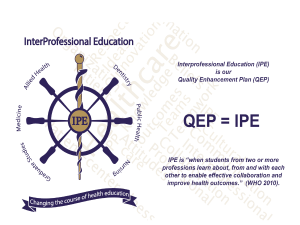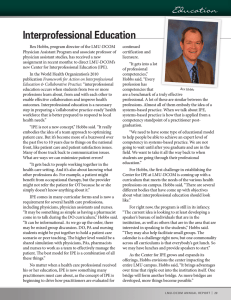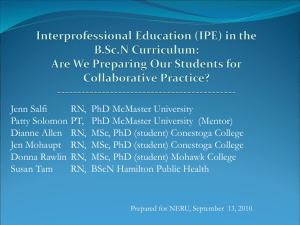ppt - UC Davis Health System
advertisement
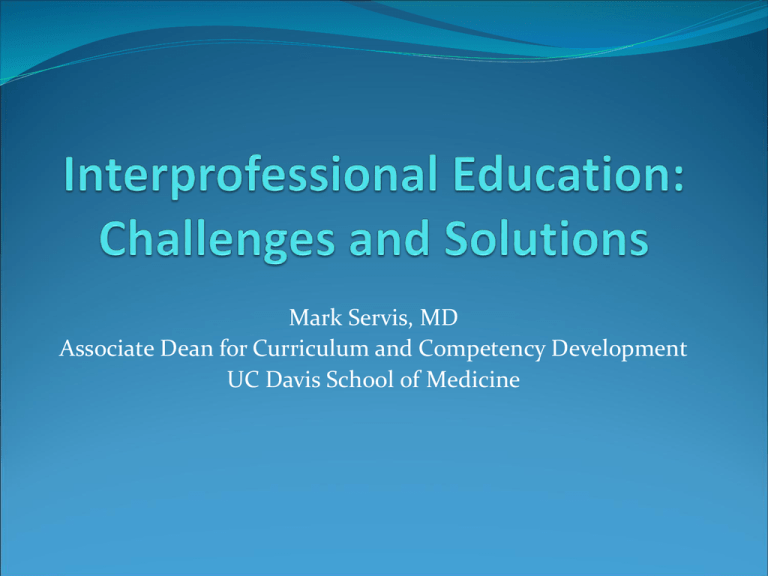
Mark Servis, MD Associate Dean for Curriculum and Competency Development UC Davis School of Medicine Objectives Understand the obstacles and barriers to effective interprofessional education Recognize possible solutions in the design and implementation of interprofessional education Create new ideas and recipes for interprofessional education We don’t have a lot of successful models for merging complex systems without one system dominating or taking over the other. Barriers to Interprofessional Education Psychosocial Cultural Logistical Structural Psychosocial Issues • Students are engaged in a powerful developmental process of professionalization • Seeking out and emulating faculty role models • Defining roles and practices • “Belonging” to a group and establishing identity Psychosocial Issues • Younger students are still struggling with the developmental process of identity formation • Health profession students, especially medical students, tend to be controlling • Students are perfectionistic, with high standards and limited tolerance for failure in themselves and others, leading to significant challenges when serving as members of teams • “MDs don’t like to delegate” Psychosocial Issues • Group dynamics of teams are challenging • Working groups are fragile • One dysfunctional member can destroy a team • Communication and role definition require continuous maintenance • Teams can regress and move to dysfunction with pairing, splitting, externalizing, and over processing Cultural Issues A curriculum that promotes individual accomplishment vs. teamwork Peer evaluation remains a challenge Hierarchy and authority/social dominance in the clinical arena Self-sufficiency – an American value Professional values that assign responsibility to the individual Cultural Issues The media perpetuates heroic solo efforts and non-team players – “House” and “Grey’s Anatomy” “White coat” ceremony sets medical students apart as “special” Culture and gender Faculty are poorly trained in IPE – role models are rare “Lone doctor model is deeply ingrained” – part of the hidden curriculum Logistical Issues Different academic schedules and calendars – calendar complexity Classroom space Not always co-located – neither faculty nor students School information systems and technology rarely integrated Logistical Issues On line curriculum – harder to adapt to IPE and teamwork oriented teaching Available time in a crowded curriculum Stretching teaching resources – a precious commodity Structural Issues Health care financing Students of widely varying backgrounds and levels of experience Promotion process for faculty is department and school based Separate leadership Different funding streams Silo mentality Are the successes to date due to novelty and a tremendous expenditure of energy and resources? What do you want to do about it? There are 25 presentations on IPE in the WGEA program this year! Psychosocial and Cultural Solutions Broadening role model and professional identity formation Early exposure to IPE before roles are too narrowly defined “Belonging” to more then one group and to diverse groups – student communities at University of Colorado Explicitly distinguishing between domains and identifying leadership Psychosocial and Cultural Solutions Specifying common competencies Sharing ceremonies Team-based learning (TBL) Problem-based learning (PBL) IPE Evaluation and OSCEs Psychosocial and Cultural Solutions Interdisciplinary team simulations – with role playing in different roles Escaping hierarchical structures and sharing or rotating leadership on teams when possible Sharing responsibility around patient safety and in concepts of professionalism Logistical and Structural Solutions Health care reform Advance planning and communication Willingness to take risks and openness to experimentation Faculty development in IPE and IPE faculty development Logistical and Structural Solutions Multidimensional partnerships Sharing resources – educational and informational technology, admissions and research infrastructure Joint leadership whenever possible Starting at the top Mental Health Cultural Competence (4) Ethics Religion and Spirituality Patient Advocacy (1) Patient Safety and QI Public Health (1) Geriatrics (3) Child Health (1) Rehabilitation Oral Health (1) CAM (1) Doctoring/Principles of Clinical Medicine (2) The primary care shortage and health care reform are crises that present opportunities.
